At the end of each teaching semester, I have made it a practice to complete a final reflection on the semester. This is the final assignment in the literacies in secondary schools courses I teach. This semester, instead of a traditional 3-5 pp. reflection, I asked students to do a photo-essay after hearing about this adaptation from my dear friend and colleague, Dr. Heather Macias. So, I’m going to try to limit myself to 5 photos w/captions and 3-4 sentence connections/ reflections, but how do you capture so much in so little space, in so few words…? I guess I’ll try my best here.
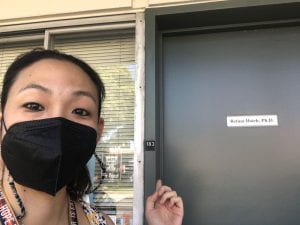
We began this semester for the first 3 weeks on Zoom, and coming back to my office & in-person instruction felt like opening a time capsule. So much was familiar, but I had changed profoundly. One of our early course readings notes, “lived experience is a pathway to subjectivity that can help to integrate identity phenomena in social, historical, and cultural activities” (Esteban-Guitart & Moll, 2014, p.34). My own lived experiences had changed so much since the last time I taught in person nearly two years before. Just as we can come to the same written text with different lived experiences and take different meaning from that text, I made different meaning from this space and in-person interactions than I had prior to March 2020.
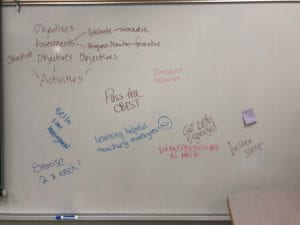
This semester, although the sequence of topics was roughly similar to past courses, my objectives felt very different. As I have journeyed as an educator, I have realized that it is critical to center our own humanity, cultural and linguistic funds of knowledge (Moll et al., 1992) and funds of identity (Esteban-Guitart & Moll, 2014), and the ways in which literacies can better help us read the world and the word (Freire & Macedo, 2005). For our first assignment, the funds of knowledge presentations, I created two (well 3) models, one which was content-specific (focused on 5-slide memoirs & family recipes, ratios & proportions) and one which shared what being “well acquainted with grief” brought to my teaching. This opened up so much space for vulnerability in our classroom communities & reminded me that embracing even the most challenging parts of my identities and experiences opens up space for others to fully see their experiences and feel a sense of belonging. It is not only okay to be fully human, but asset-based views of humanity can allow for the development of a profound sense of community.
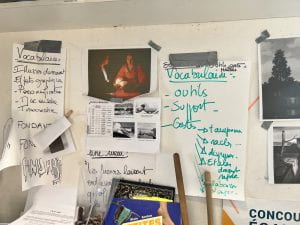
Over Spring Break, I visited a middle school in France. In the art classroom, I saw many of the practices I teach including this vocabulary word wall, and modeling of visual thinking skills and problem solving. Later in the semester, I gave my 30-minute lecture SDAIE lecture in French. Hearing the sense of empathy that many of you developed was powerful, but perhaps more powerful was the brilliant testimonies of your colleagues who were former emergent bilingual students themselves about the importance of scaffolding strategies, and their contributions of their experiences to each of us. We truly co-constructed meaning, supporting one another in developing skills and new perspectives.
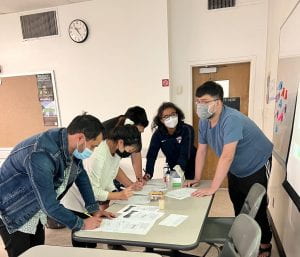
Part of the best thing about being together in person is the opportunity to actually engage in the strategies you’re learning about. It is always a joy for me to see the different ways you engage with, think through, and even critique the literacy scaffolding strategies that are a major part of the course. This semester, I particularly appreciated the ways that so many of you highlighted opportunities for interaction as key to supporting your individual learning. Yes, strategies are important, but communication, collaboration and community are equally important to our growth and development.
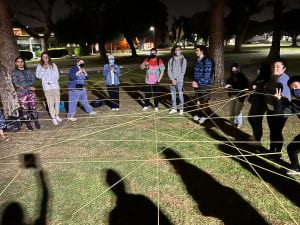
I end every semester with the web of learning. I love the symbolism of the web, a physical representation of the ways we have built connections over this semester, and I also appreciate that when community comes to an end in some ways, when we cut these ties and leave a place physically, we are not the same as when we arrived. While we may not all be together physically in the same place again, we take a part of the experiences of this semester with us. Each of you has changed me, and collectively our community has helped me grow. It is a privilege to have walked alongside you this semester, to have guided your learning in some ways and to have learned from you in others. Thank you for the gift of bringing yourself into this community this semester. I hope we’ll always stay connected.
Works Cited
Esteban-Guitart, M. & Moll, L. C. (2014). Funds of Identity: A new concept based on the Funds of Knowledge approach. Culture & Psychology, 20(1), 31–48.
Freire, P., & Macedo, D. (2005). Literacy: Reading the word and the world. Routledge.
Moll, L. C., Amanti, C., Neff, D., & Gonzalez, N. (1992). Funds of knowledge for teaching: Using a qualitative approach to connect homes and classrooms. Theory Into Practice, 31(2), 133-141.